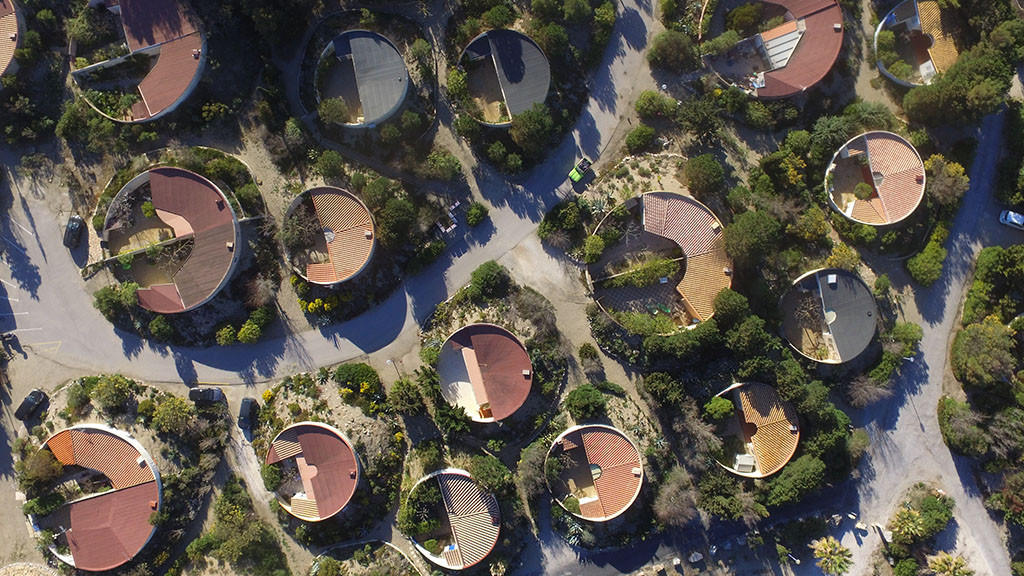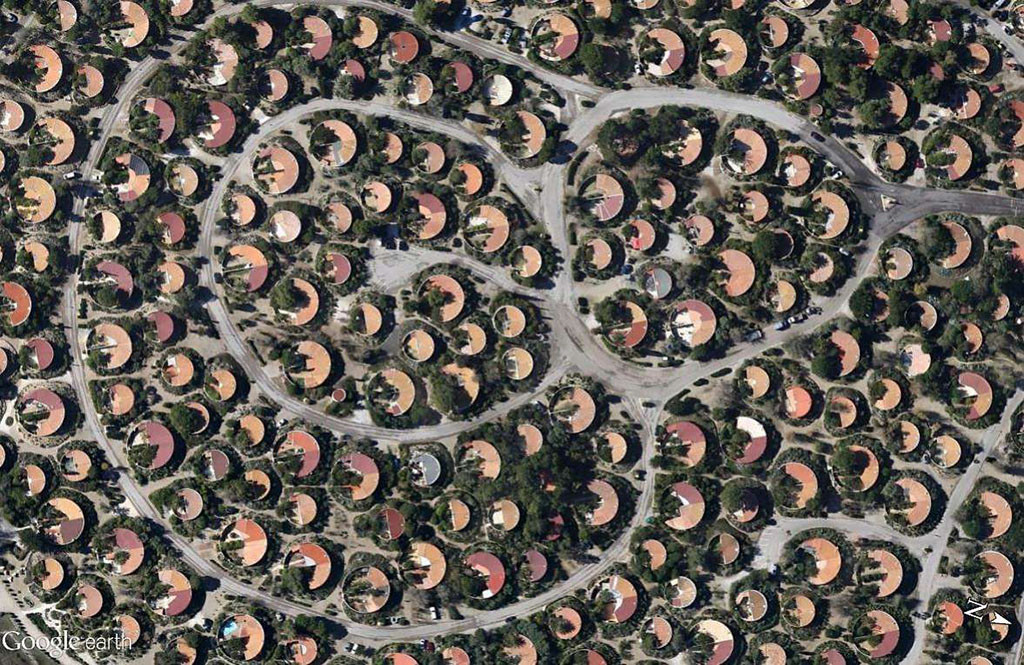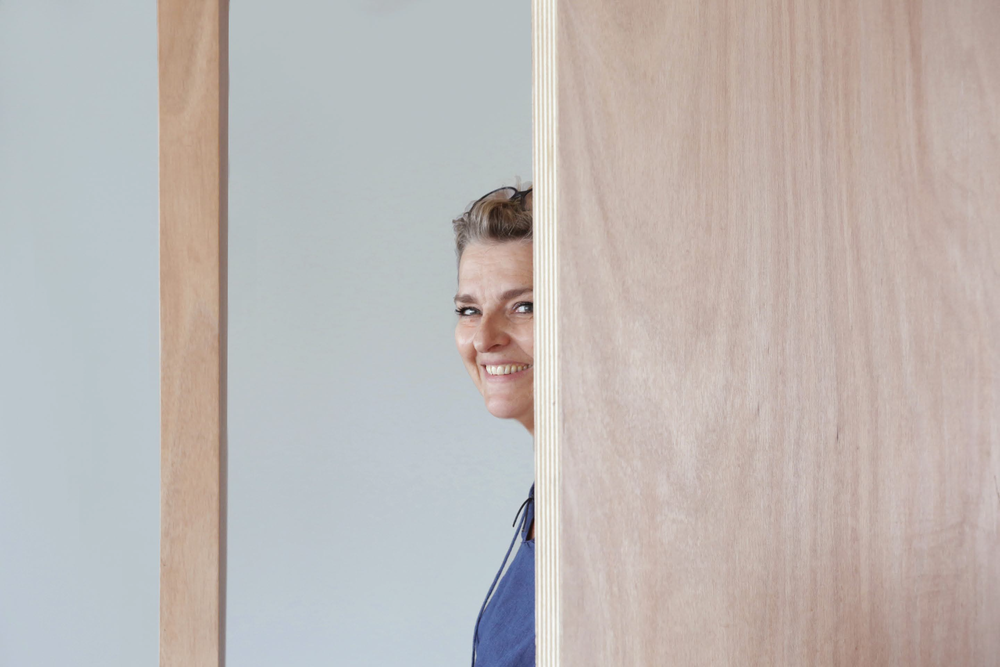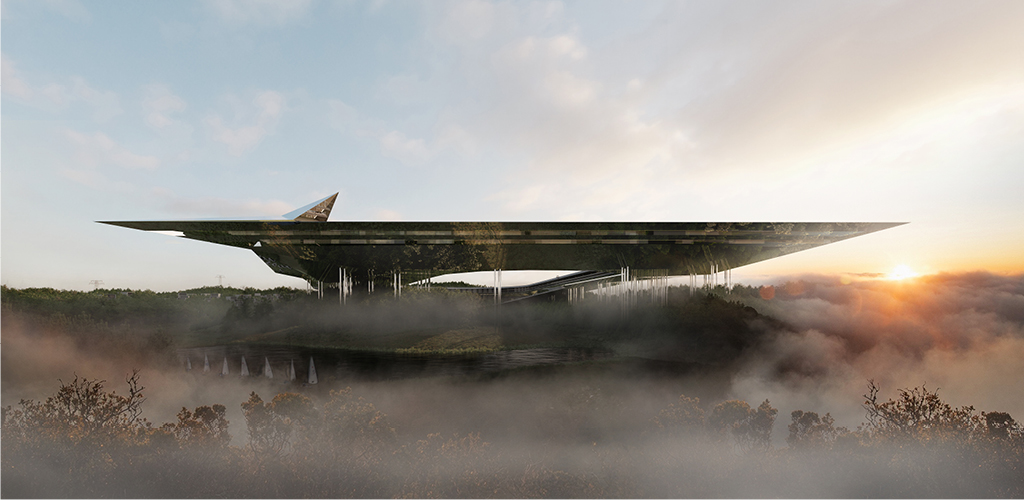
and bioclimatic houses next to the sea - Torreilles, Pyrénées-Orientales © Orson Thornhill
Life on the dune
Despite critics first qualifying its apparence as space-age-like, Michèle François is defending “le village des sables” (sand village) of Torreilles as a great example of the incorporation of seasonal housing within the natural landscape.
This "Carte blanche" by Michèle François, remarkable contemporary architecture correspondent, DRAC Occitanie, Montpellier site, is an excerpt from AA's special issue - Elementary Particles- focused on the work of French Architecture agency Loci Anima.
Not far from Perpignan, in the Pyrénées Orientales area in the south of France, south of Barcarès, on the wild coastline between the mouths of the rivers Agly and Bourdigou, Torreilles was a village of winegrowers, set inland with its back turned to the sea, as is often the case on the coast. During the 1960s and 1970s, the entire coastline was transformed by Mission Racine, a project founded in 1963 to develop tourism along the Languedoc-Roussillon coastline, with the principle of developing new resorts while preserving zones of nature reserves where construction would not be permitted. The beach at Torreilles became an economic asset. A holiday resort was envisaged: village, marina, main square and shops. It has remained unfinished. The village preferred to give its support to campsites.
The only residential buildings constructed were the 640 bungalows of the ‘Village des Sables’ development, completed by the developer Guy Merlin to plans by Perpignan architects Maurice Abelanet, Jean Dujol, Jacques Bourbon and Henri Lacalm, on a 33-ha site. Planning permission was granted on 27 November 1974, renewed on 21 January 1976, with two amendments in 1977. The scheme was completed in 1978. At the same time, the shacks in Bourdigou were torn down, the last village of beach huts and cabins along the coast, built without permission and designated as slums. The development of this coastline was indeed accompanied by a ferocious battle against makeshift cabins and wild camping. While the new-found idea of successful developer Merlin was to propose covering the concrete walls of its Village des Sables (housing estate, you might say) houses with reeds. This is the material traditionally used by fishermen on the fishing lakes to build their temporary huts (‘barracas de sanills’).

The 640 bungalows of the Village des Sables collective development, built on the sand, are distributed around a large estate with a circulation of sinuous, pedestrian paths. There are two types of villa: 300 detached 40-sq.m villas and 340 semi-detached 32.sq-m villas. Each unit is composed of a little circular perimeter wall in ribbed reinforced concrete, built against an artificial mound of sand, north facing, in order to protect it from the tramontane wind and provide some cooling. This surrounding wall, higher on the north side, lowers to the south. As with all holiday homes, internal living space is minimised in order to maximise outdoor space: the rooms are arranged in a fan-like configuration around the semi-circle of the north wall, all opening directly onto the terrace that occupies the southern half of the plot.
The estate rules imposed the maintenance of the reed roofs (payable by the owner), which today have completely disappeared. The roofs have been recovered in red asphalt insulation, canal tiles, solar panels, and a whole assortment of other materials, with air conditioning units, barbecues and other additions, recalling the phenomenon of the unplanned construction of huts along the coast.
The space-age image at the start of the development, which prompted the press at the time to say with irony; “We have walked on the dune!”, was transformed by the care taken in planting the mounds that protect the houses and accentuate their invisibility. The use of curves throughout the development, the circular form of the villas drawn by the architects and their clever dissimilation in the sand ensured by the vegetation, stand the Village des Sables in Torreilles as an example of the incorporation of seasonal housing within the natural landscape.



